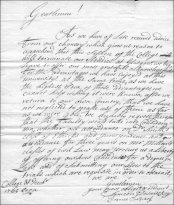The University of Glasgow’s historic links with shipbuilding on the Clyde are clear to see throughout the University campus. The Randolph Hall, for example, is named for Sir Charles Randolph, co-owner of the prestigious Randolph, Elder & Co. shipyard, who left £60,000 to the University to complete the construction of the Bute Hall. Similarly, the University’s School of Naval Architecture was, until 1906, housed in Pearce Lodge, named for another shipwright, Sir William Pearce. Indeed, the Chair of Naval Architecture was endowed by Isabella and John Elder themselves.
Evidently, the University of Glasgow has a rich history of Naval Architecture. The subject flourished in the late 19th century, coinciding with an influx of international students arriving in Glasgow to study at the world-renowned school. Most notable amongst the University’s records are a high number of students from the United States of America, many of whom were graduates of the US Naval Academy in Annapolis, Maryland. These students of Naval Architecture often went on to fill high ranking positions within the US Navy prior to the First World War.
Washington Lee Capps , for example, became Chief of the Bureau of Construction and Repair, alongside a promotion to Rear-Admiral within two decades of his graduation in 1888. During World War Two, Capps was honoured by the US Navy with the naming of two ships in his honour.

Graduation Signature DSc 1912
Similarly, many other University of Glasgow alumni rose to the rank of Rear-Admiral. Richard Morgan Watt, a graduate of the Class of 1892, was awarded the Navy Cross for his role in construction during the First World War, and was also the primary investigator on the enquiry into the sinking of the Titanic. A classmate of Watt, George Henry Rock, also achieved this rank, and was awarded the Navy Cross for his role at the New York Shipyard. Many of the men who studied at the University of Glasgow are now buried in the Arlington National Cemetery in the United States, reflecting their role in serving their nation.
Why then, were so many Americans coming to study in Glasgow in this period?
In answering this question, it is important to consider the reasons that Naval Architecture was so prominent in the 1890s. In this period, the face of Naval Architecture was changing completely. Naval fleets, prior to 1890, were made up of ships which looked nothing like the style of ship we would recognise today as a modern battleships.The HMS Devastation was probably the most powerful ship as late as the mid-1880s, and Glasgow-built ships, such as HMS Campania, had to be completely refitted to serve a new purpose.

HMS Campania, converted Cunard Line ocean liner to seaplane tender and aircraft carrier for WWI
Given Britain’s rank as perhaps the most powerful naval force in the World, it is unsurprising that its ports, such as Glasgow, were at the forefront of naval innovation and the development of a new class of ship. This was a period in which naval architecture was developing at its fastest ever rate, and nations all over the world were keen to keep up, and Glasgow was the ideal institution at which to study.
Furthermore, it must be remembered that the United States has not always been the military force it is known as today. Indeed, in the 1890s, when these students were studying, the US Navy was insignificant in comparison to its European counterparts – it was, in fact, smaller than that of Belgium. There was a substantial naval element to the US Civil War, with both sides developing significant Naval forces (many ships were constructed in British ports such as Glasgow and Birkenhead), yet by the turn of the century these largely wooden ships were vastly outdated. The US Navy was, at this point, effectively a coastal defence force, unable to take to the seas and challenge for naval superiority.
Alongside this, there were a number of notable military theorists discussing the importance of a Navy in this period. Most notable amongst these was Alfred Mahan, a US Navy Admiral and strategist. In his piece, “The Influence of Sea Power upon History, 1660-1783”, published in 1890, he theorised that nations with superior navies would have a greater worldwide impact. This concept was hugely influential throughout the world, and in the United States in particular, and this effectively sparked a naval arms race. The United States soon began to realise their need to catch up with their European counterparts, and this must be seen to be integral to the sending of so many men to Glasgow.
The University of Glasgow, then, was at the forefront of Naval Architecture in this period, and the United States needed a more advanced Navy. In this light, it is unsurprising that so many Americans, who would go on to achieve great things as naval constructors, would have studied at the University.
By Hugh Roberts, MA History (who continues to research the Naval Academy students at Glasgow pre WWI).























